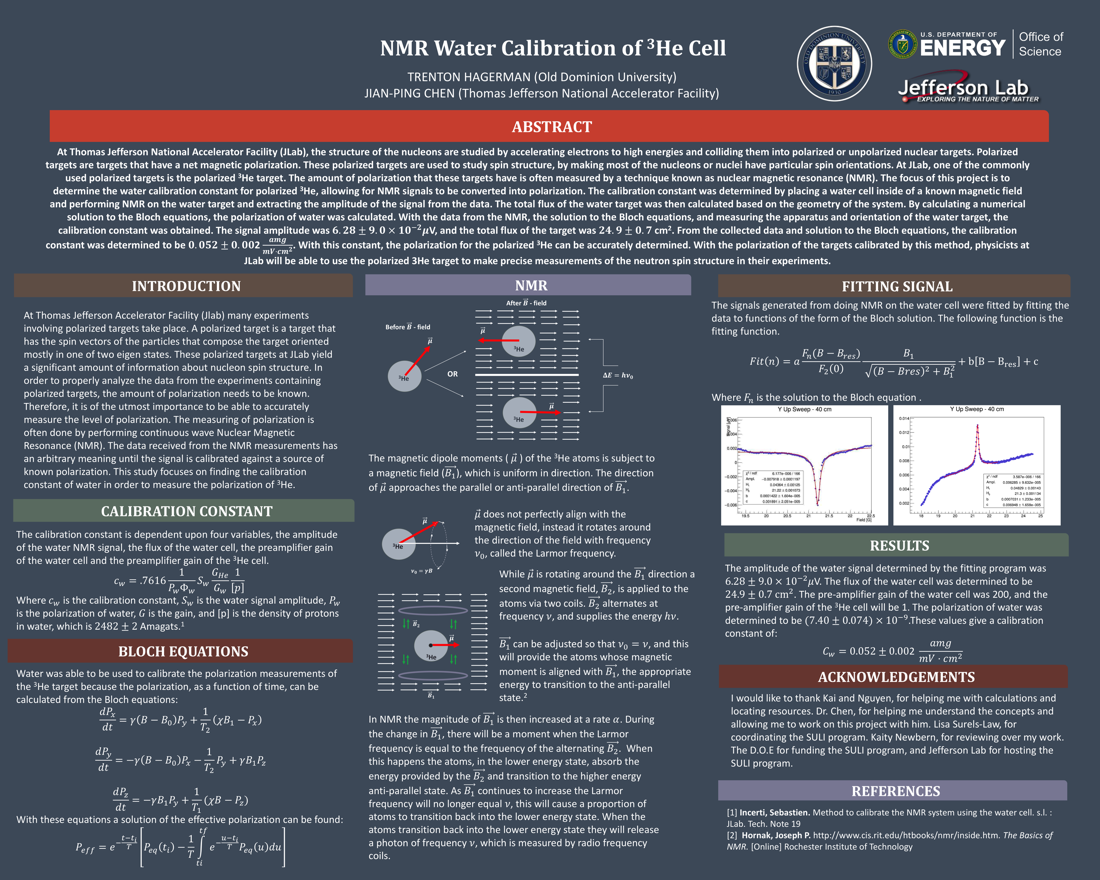Undergraduate Research at Jefferson Lab
NMR Water Calibration of 3He Cell
Student: Trenton Hagerman
School: Old Dominion University
Mentored By: Jian-ping Chen
At Thomas Jefferson National Accelerator Facility (JLab), the structure of the nucleons are studied by accelerating electrons to high energies and colliding them into polarized or unpolarized nuclear targets. Polarized targets are targets that have a net magnetic polarization. These polarized targets are used to study spin structure, by making most of the nucleons or nuclei have particular spin orientations. At JLab, one of the commonly used polarized targets is the polarized 3He target. The amount of polarization that these targets have is often measured by a technique known as nuclear magnetic resonance (NMR). The focus of this project is to determine the water calibration constant for polarized 3He, allowing for NMR signals to be converted into polarization. The calibration constant was determined by placing a water cell inside of a known magnetic field and performing NMR on the water target and extracting the amplitude of the signal from the data. The total flux of the water target was then calculated based on the geometry of the system. By calculating a numerical solution to the Bloch equations, the polarization of water was calculated. With the data from the NMR, the solution to the Bloch equations, and measuring the apparatus and orientation of the water target, the calibration constant was obtained. The signal amplitude was (6.28 ± 9.0 × 10-2)μV, and the total flux of the target was (24.9 ± 0.7)cm2. From the collected data and solution to the Bloch equations, the calibration constant was determined to be (0.052 ± 0.002) amg/mV-cm2. With this constant, the polarization for the polarized 3He can be accurately determined. With the polarization of the targets calibrated by this method, physicists at JLab will be able to use the polarized 3He target to make precise measurements of the neutron spin structure in their experiments.

Citation and linking information
For questions about this page, please contact Education Web Administrator.
